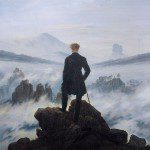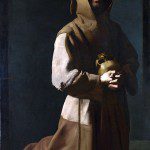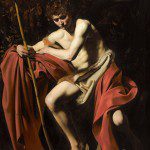I was only nine when I saw it. And it is strange that I still remember it. It was in the basement of my childhood home – my father’s office, to be exact. Unlike the house we lived in before, this basement had no natural light. Though light fixtures and lamps fought against the encroaching darkness, an older sister could devilishly switch the light off while you were down there and leave you instantly consumed by the inky blackness. And it was frightening.
So it was in this setting that I saw it. The Book. Now the books lining my father’s office numbered into the hundreds and they struck me as simultaneously enticing and eerie. Agatha Christie and Stephen King novels with foreboding covers were eclectically mixed with colorful Bibles and mundane education textbooks. Hours could (and would) be lost thumbing through books stacked tall with intrigue and wonder. But there was one book that simply kept drawing me back. It was a tome. Black, hardcover, and easily a thousand pages. Its dust jacket was frayed. Its spine was branded with a stark white circle which encircled an unforgiving twisted cross – a swastika, to be precise. This was William Shirer’s The Rise and Fall of the Third Reich.
I pulled the book down and was intimidated by its weight. Cracking the book open to a random page, the writing instantly struck me as dense and unapproachable. The few pictures and maps, which interrupted the book’s flow, offered no reassurance – this was not a work to be approached lightly. As I closed the book, I couldn’t help but notice the man on the back cover. Bald, gray and bespectacled, he flatly peered back at me. With a typewriter in front and colorless books behind him, the entire scene emitted an overwhelming darkness. And then there were his eyes. William Shirer’s eyes were inescapable. They pierced me. The Berlin correspondent for CBS News during the rise of Adolf Hitler had eyes which were aged – if not afflicted – by had they had seen and endured. With that, I closed the book and ran upstairs. I no longer wanted to be down there alone.
This was my first exposure to National Socialism. As such, I knew little about what this book, swastika and author meant. But I was determined to find out. So I did what any nine year old boy does when he wants find an authoritative answer: I asked my dad. And he told me.
Initially, I was dumbstruck. And then I asked a thousand questions. Who was Adolf Hitler? How did he come to power? What was he trying to accomplish? Who would follow him and why? Why did he hate the Jews? What happened in the concentration camps? How could Hitler believe such things? How could Hitler do such things? And who, I needed to know, was willing to stand up to him?
Now, I was young and insatiably curious and, to be fair, my dad used discretion in what he told me. However, I found that even a watered-down version of Hitler’s nefarious ambitions and ruthless atrocities was enough to stagger me. Those initial and formative discussions have stayed with me. But so have the questions.
Years have passed. And I read The Book. Additionally, during and after medical school, I devoured authoritative books on Hitler and National Socialism by Alan Bullock, Joachim Fest, Ian Kershaw, Richard Evans and Christopher Browning. I’ve traveled and toured Europe and crafted a series of lectures on the Titans & Tyrants of World War II. But here’s the thing: in spite of thirty-two years and a good amount of research, I am still struggling to understand. Consequently, it is easy to despair with Primo Levi, an Auschwitz survivor and author. A thirst-wracked Levi plucked a coveted icicle from his concentration camp cell window only to have it swatted out of his hand by a nearby Nazi guard. Beside himself, Levi glared at the guard and risked all asking, “Why?” The guard simply stared back impassively and answered, “Here there is no why.”…
For the remainder of this piece, please link to Joseph Pearce’s St. Austin Review & subscribe to a wonderful journal of Catholic culture.


















